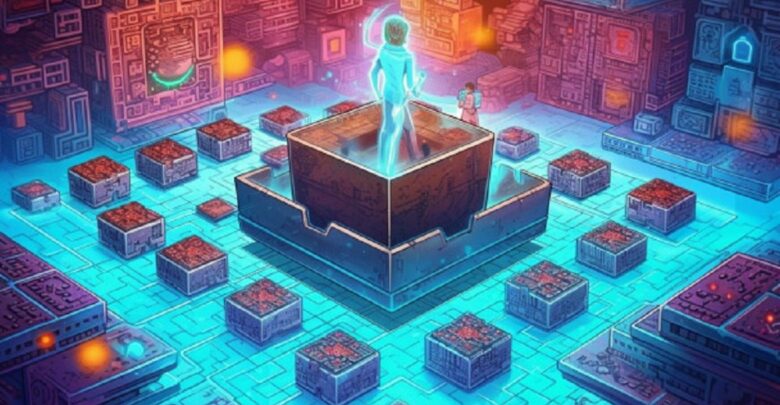Unveiling the Mysterious Layer 0 of Blockchain: Everything You Need to Know

Layer 0’s relevance is revealed when delving into the underlying mechanisms of blockchain networks and applications, such as optimizing the backbone of distributed systems like Venom. Layer 0 provides the fundamental structure for all blockchain protocols and allows efficient data exchange across blockchains operating at the Layer 1 level. It’s the foundation on which the decentralized apps and companies of the blockchain ecosystem are constructed with novel methods of network architecture like sharding and parallel processing, layer 0 blockchains attempt to solve the standard blockchain’s scalability, performance, and security issues.
Blockchain Layers
Blockchain exists in a multifaceted ecosystem where all participants work together to build a trustless and safe system. Layer 0 is the foundation, Layer 1 is the middle tier, and Layer 3 is the top. These are often called “protocol stacks” or “blockchain stacks.”
Blockchain networks and apps rely on Layer 0 as their foundation. It is built to function at the network infrastructure layer, where it optimizes the core technologies and protocols that make the blockchain possible. Cosmos (ATOM) and Polkadot (DOT) are two examples of Layer 0 blockchains, while Venom is another.
Layer 1, often known as the “base layer,” consists of the fundamental protocols and technologies that underpin the blockchain network. This includes things like the consensus method and cryptographic protocols. Bitcoin (BTC), Ethereum (ETH), and Litecoin (LTC) are all blockchains that operate on a lower layer than Bitcoin.
Layer 2, built on top of Layer 1, is meant to improve the blockchain network’s scalability, speed, and usefulness. These protocols and technologies use payment channels, sidechains, and off-chain protocols to alleviate network congestion and speed up transactions.
Decentralized apps and smart contracts are examples of layer three applications that are created on top of the blockchain infrastructure. Layer 3 applications may include NFT markets, identity verification systems, and DeFi platforms. They use the blockchain’s inherent decentralization and safety to provide cutting-edge service innovations.
How Does the Layer 0 Protocol Work?
Blockchain networks are founded on Layer 0 protocols, which provide a springboard for creating Layer 1 blockchains. They establish an interoperable, distributed, and secure environment.
Layer 0 protocols rely heavily on consensus mechanisms to help nodes in the network agree on the state of the blockchain. Various Layer 0 protocols use multiple approaches to improve network security and reliability.
Through innovative transaction processing and data storage approaches, layer 0 protocols help address blockchain industry scalability challenges. Blockchain networks benefit from this because they become more efficient at processing transactions and expanding their capacity.
Layer 0 Essential Elements
The three primary parts of Layer 0 blockchain technology are the main chain, the sidechains, and the cross-chain transfer protocol. The main chain, often called the relay chain, processes and stores transaction data for the Layer 1 network. With their coins, consensus methods, and blockchain protocols, sidechains are independent networks parallel to the main chain. Some sidechains connect to the main chain for safety, while others don’t. Last but not least, the cross-chain transfer protocol ensures compatibility and the movement of assets across different blockchain networks by allowing for safe information transmission between them.
Layers 0 Examples
Layer 0 blockchains include the following protocols on the blockchain.
Regarding DeFi applications, rapid transaction processing and cheap fees are essential, and Avalanche, a Layer 0 blockchain, employs the “Avalanche consensus protocol” to make this possible. Contract Chain (C-Chain), Exchange Chain (X-Chain), and Platform Chain (P-Chain) are the three mainstays of its tri-blockchain architecture. X-Chain is optimized for asset generation and trade, C-Chain for innovative contract development and execution, and P-Chain for validator and subnet coordination. Avalanche provides a reliable platform for DeFi by emphasizing safety, speed, and efficiency.
Cosmos
To facilitate the development of a broad network of linked blockchains, Cosmos Network provides a novel Layer 0 platform. Cosmos’s innovative Inter Blockchain Communication Protocol (IBC) allows for the unhindered transfer of information and assets across the several blockchains that make up the network. While IBC compatibility is required for all new blockchains, no other network structures or consensus process constraints exist. The Cosmos software development kit (SDK) also gives programmers the tools to build specialized chains and apps inside the Cosmos ecosystem.
Venom and Its Key Layer 0 Protocol Features
The scalability problem can be solved without sacrificing security or decentralization with Venom, a Layer 0 blockchain. Venom’s Dynamic Sharding Protocol and Workchains allow it to scale vertically and horizontally, making it ideal for widespread use. The Venom Foundation guarantees the network’s safety via PoS consensus and alliances with leading audit firms. The cross-chain communication protocol ensures interoperability, and the novel design can handle essential and complicated services. This encourages teamwork and new ideas in the blockchain sector.
Layer 0 Protocols’ Future
As a substitute for smart contracts and a potential answer to blockchain’s scalability problems, layer 0 protocols are rising in prominence. Decentralized apps and Layer 1 protocols have succeeded on several platforms, including Avalanche, Polkadot, and Cosmos.
Venom and other upcoming Layer 0 protocols are forerunners in regulated markets because they bring together decentralization and regulatory compliance to promote blockchain technology’s widespread adoption.
Layer 0 technology allows for almost infinite scalability, alleviates network congestion, and preserves network security and complete decentralization. This method is essential for solving a significant problem with blockchain technology.
Bottom line
With the advent of Layer 0 protocols, the blockchain industry is on the cusp of significant advancement. Horizen, Polkadot, and Cosmos are examples of Layer 0 platforms that aim to solve the scalability problems that have slowed blockchain adoption by focusing on the underlying architecture of the network rather than the smart contracts that run on it. These protocols provide potential options for blockchain networks to process enormous transaction volumes safely and without losing decentralization, including sharding and dynamic partitioning. However, obstacles like incompatibility across systems and government oversight still need to be addressed. Despite this, Layer 0 protocols are crucial to developing blockchain and decentralized applications because of their infinite scalability and efficiency.
Tokenhell produces content exposure for over 5,000 crypto companies and you can be one of them too! Contact at info@tokenhell.com if you have any questions. Cryptocurrencies are highly volatile, conduct your own research before making any investment decisions. Some of the posts on this website are guest posts or paid posts that are not written by Tokenhell authors (namely Crypto Cable , Sponsored Articles and Press Release content) and the views expressed in these types of posts do not reflect the views of this website. Tokenhell is not responsible for the content, accuracy, quality, advertising, products or any other content or banners (ad space) posted on the site. Read full terms and conditions / disclaimer.







